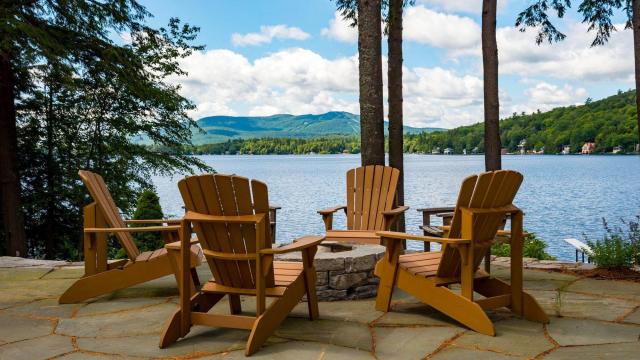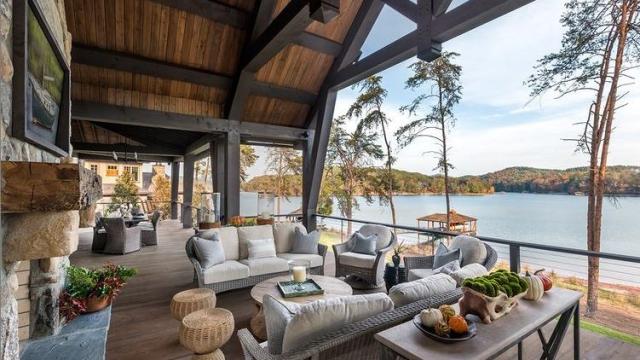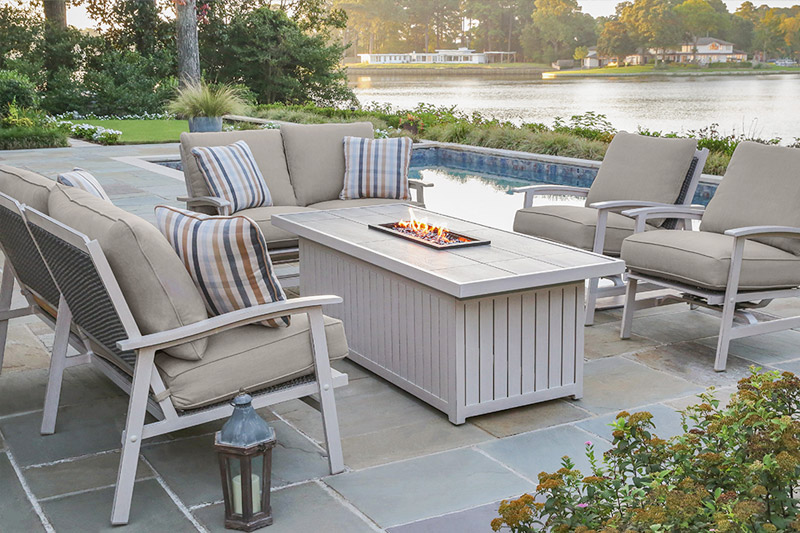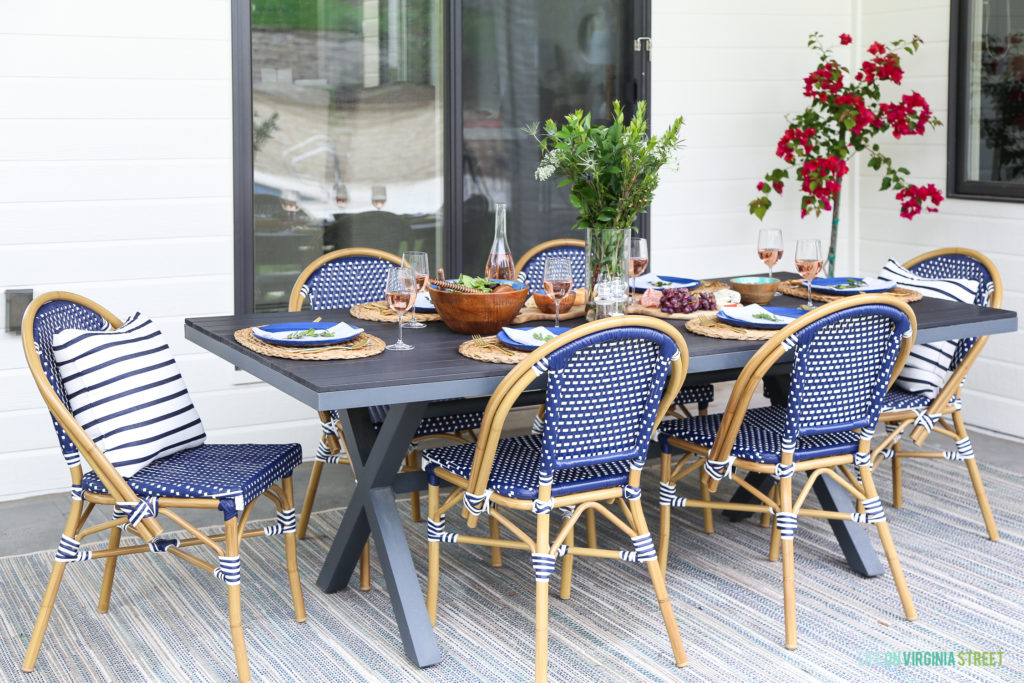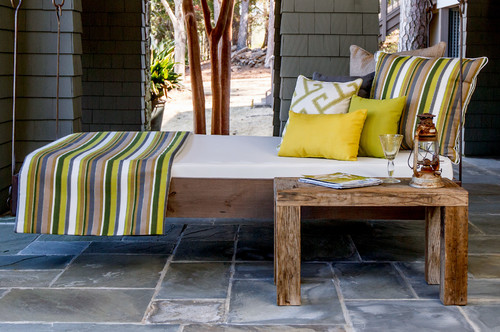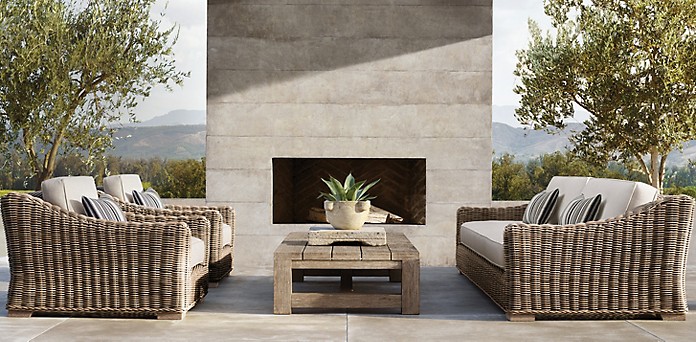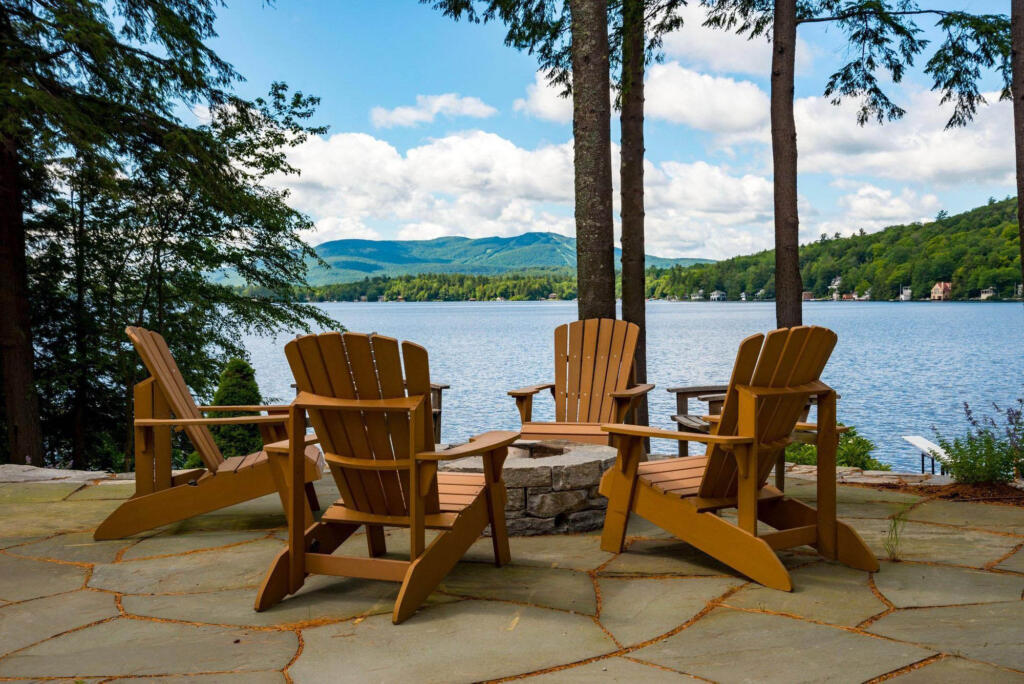
When it comes to outdoor kitchens at the lake, wooden furniture is a classic. Besides being a timeless and eco-friendly building material with many diverse uses, wooden outdoor furniture is also a look that will never go out of style. It also matches the lake aesthetic, honoring biophilic design. Functionally, it’s simple to clean with a gentle soap and water wash at the season’s start.
However, if you’re designing your backyard living space from scratch, how do you know what woods to choose? First, it’s important to understand the two basic categories of wooden furniture: hardwood and softwood. Generally, the consensus is that hardwoods are top tier due to their extreme durability. But don’t discount softwoods either — materials like cedar and cypress are still excellent furniture choices due to their natural moisture. Within both subgroups, we have plenty of recommendations. Check out these seven highly regarded materials for wooden furniture!
Acacia
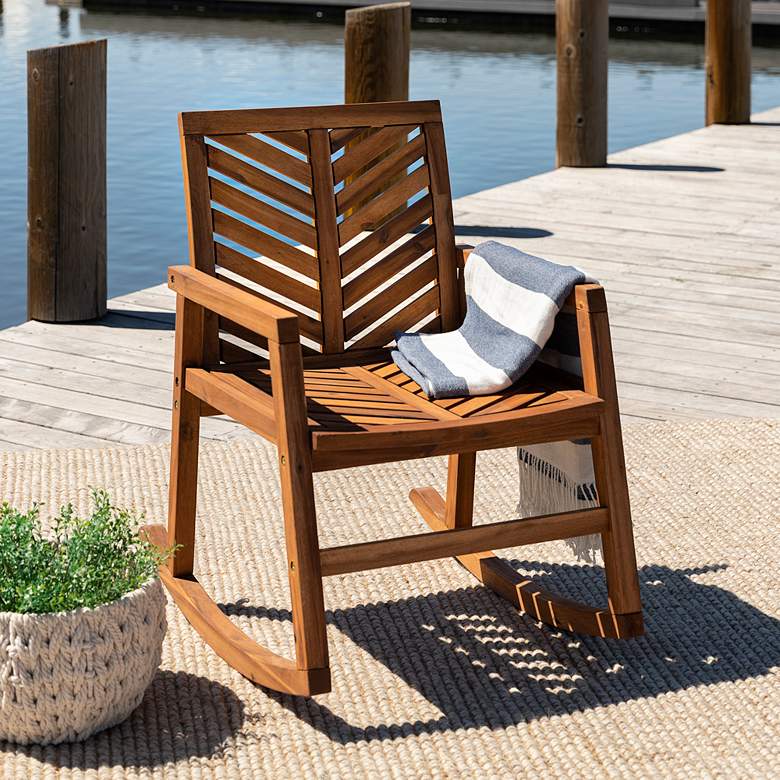
The dark golden-brown color of acacia is an attractive addition to any lakeside retreat. This thick hardwood material is also very affordable because it grows in abundance. In fact, it grows so well that sometimes, the species is considered invasive. For outdoor furniture specifically, acacia’s high oil content makes it resistant to natural causes of decay such as extreme weather, rotting over time, and insect infestation. If correctly sealed, furniture made from acacia can hold up for years to come.
Cedar
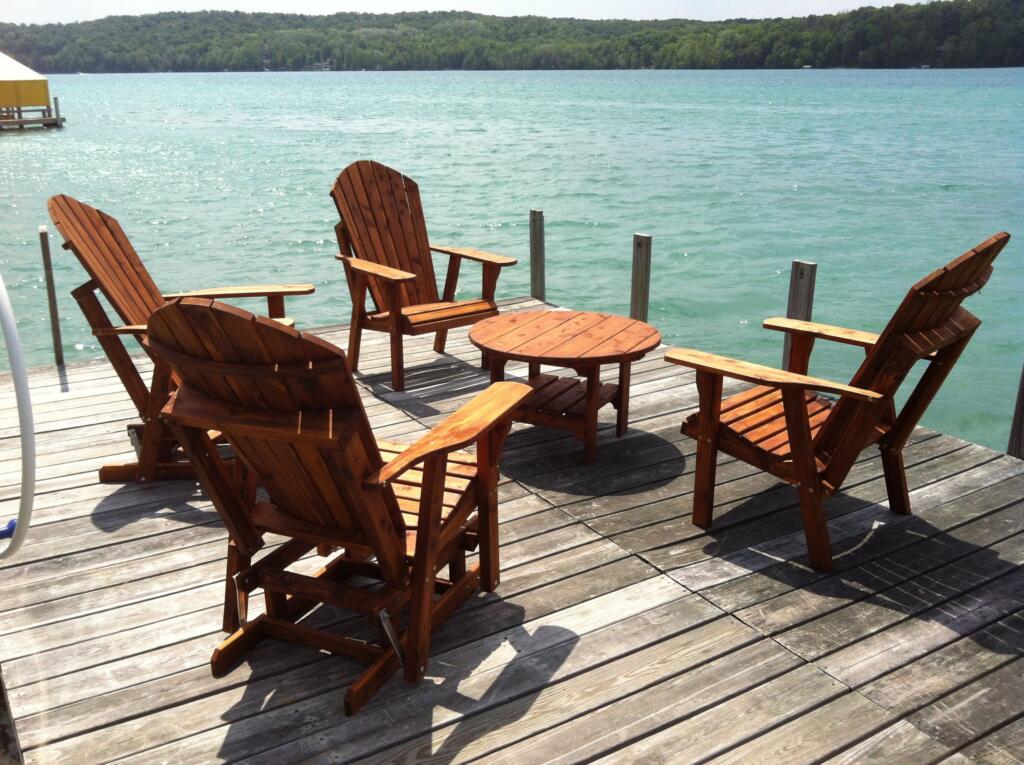
Cedar is most recognized for its lovely pinkish-red color — a distinctive hue that evokes a sense of warmth in your home (to prevent fading over time, you can stain cedar wood to protect this color). This lightweight softwood material is also known for its rot resistance, as well as its repellence to termites and insects such as pondered beetles. Its highly resistant properties have led to this wood’s popularity in fences and roofing, as well as outdoor furniture.
On the downside, cedar is more brittle than other types of wood, leading to poorer screw-holding capabilities. However, cedar’s moisture retention and resulting sturdiness make up for its lack of perfect durability.
Cypress
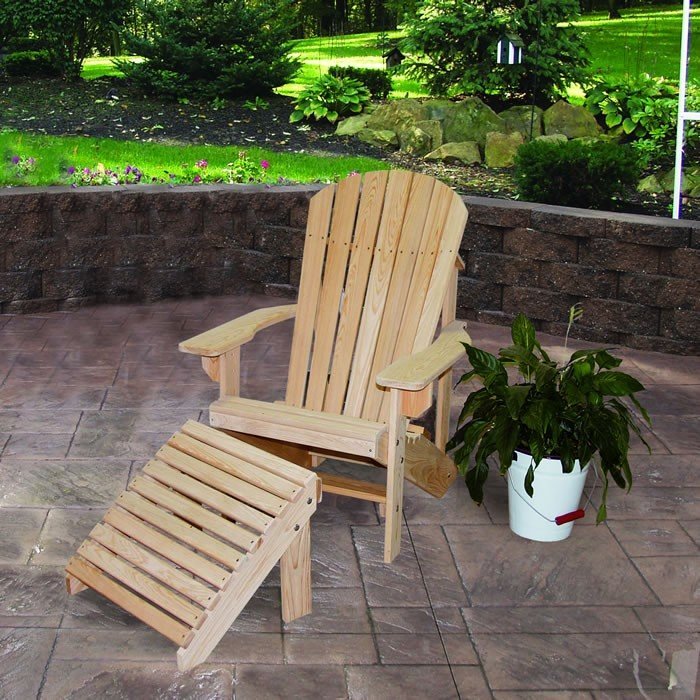
Cypress is a relatively inexpensive, popular wood for outdoor furniture. Although its softwood status means limited hardiness, its natural moisture-wicking properties make up for this deficit. Since cypress releases a natural water repellant, it is an excellent choice for wet climates, especially a lake house environment. Plus, the silvery gray color that cypress achieves over time is a classic look.
Redwood
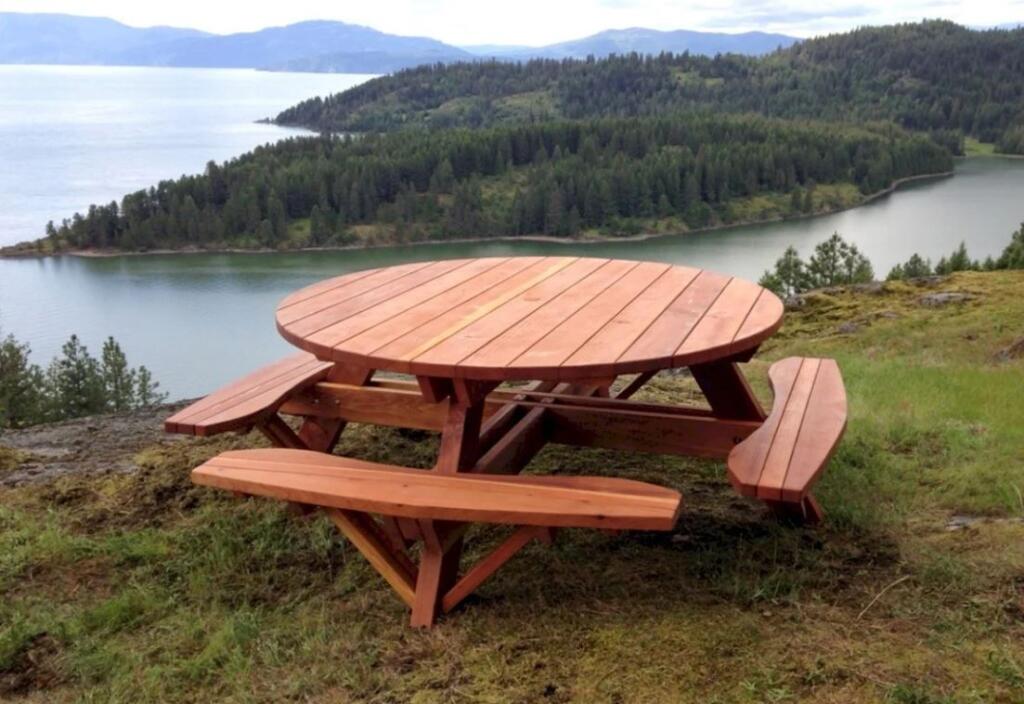
You may associate redwood with the California forest, but this durable wood also has uses closer to home. Like cypress, redwood is a softwood that is often used in outdoor furniture due to its natural insect and moisture resistance. As a softwood, it is susceptible to dents and chips. However, its adaptability to a variety of climates, as well as its unique deep red coloring, compensates for this shortcoming. Because redwood takes a long time to grow, this wood comes with a higher price tag — however, it’s certainly worth the investment.
Teak
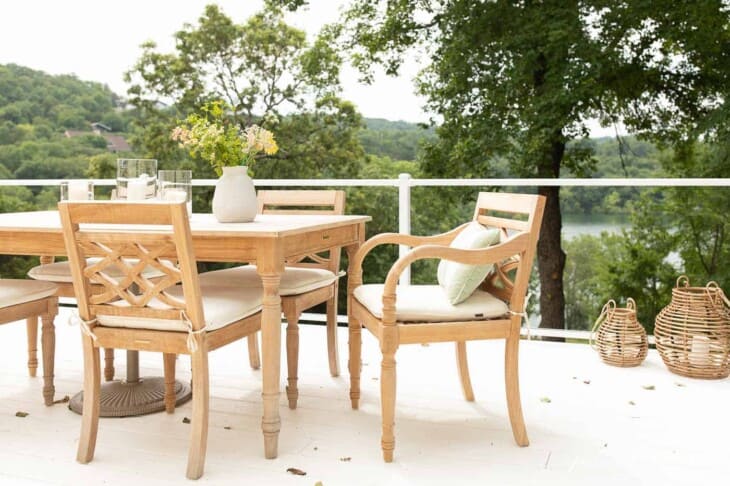
For many reasons, teak is considered the gold standard for outdoor furniture. This valuable wood from Southeast Asia is waterproof, durable, sunlight resistant, and aesthetically pleasing. It also doesn’t expand with changes in humidity, and it’s able to withstand all types of weather conditions. Given these advantages, it’s no wonder that teak wood is some of the most expensive. You’re paying for the best of the best.
White Oak
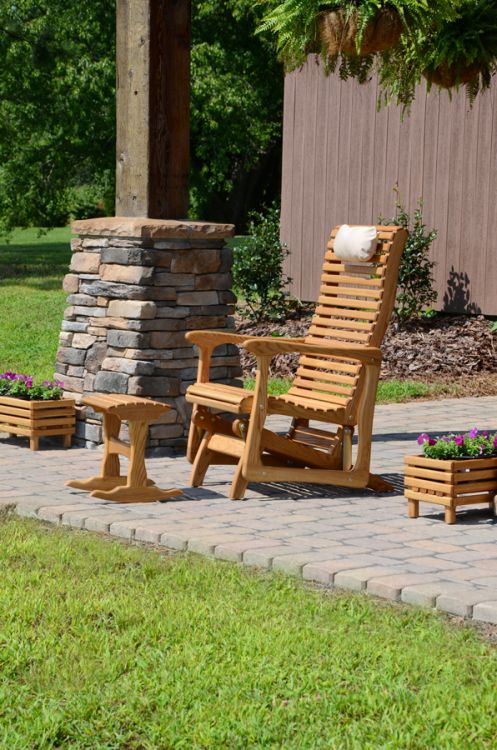
For those living in wet climates, white oak is a great option because it tends to resist water damage. Because of this quality, oak is highly attractive to those who live in lake environments. It’s also versatile, resistant, and consistently available as oak is the most abundant type of hardwood in the U.S. As a downside to be aware of, white oak requires maintenance over time, including keeping your furniture in the shade to avoid fading color from direct sunlight.
Ipe
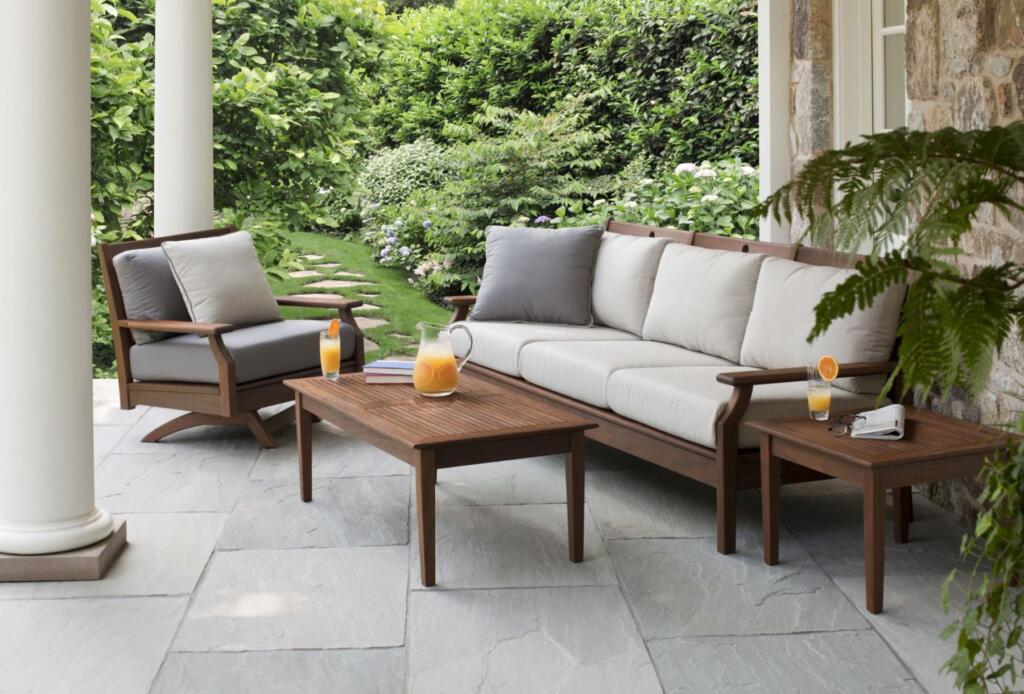
This hardwood material imported from South America is known as the densest wood in the world. In fact, the density of ipe wood is so great that it barely floats — an attribute that showcases its water resistance. Additionally, the density allows it to resist cracking and decomposition. Overall, ipe is similar to teak in terms of wood type in durability. However, its price tag is lower than teak, making ipe a hardy, yet more budget-friendly, alternative high-end lumber.
No matter which material you choose, you can’t go wrong with wooden furniture at the lake. We wish you the best in designing your outdoor space! Keep an eye on Lake Homes Lifestyles for more indoor and outdoor design tips.

